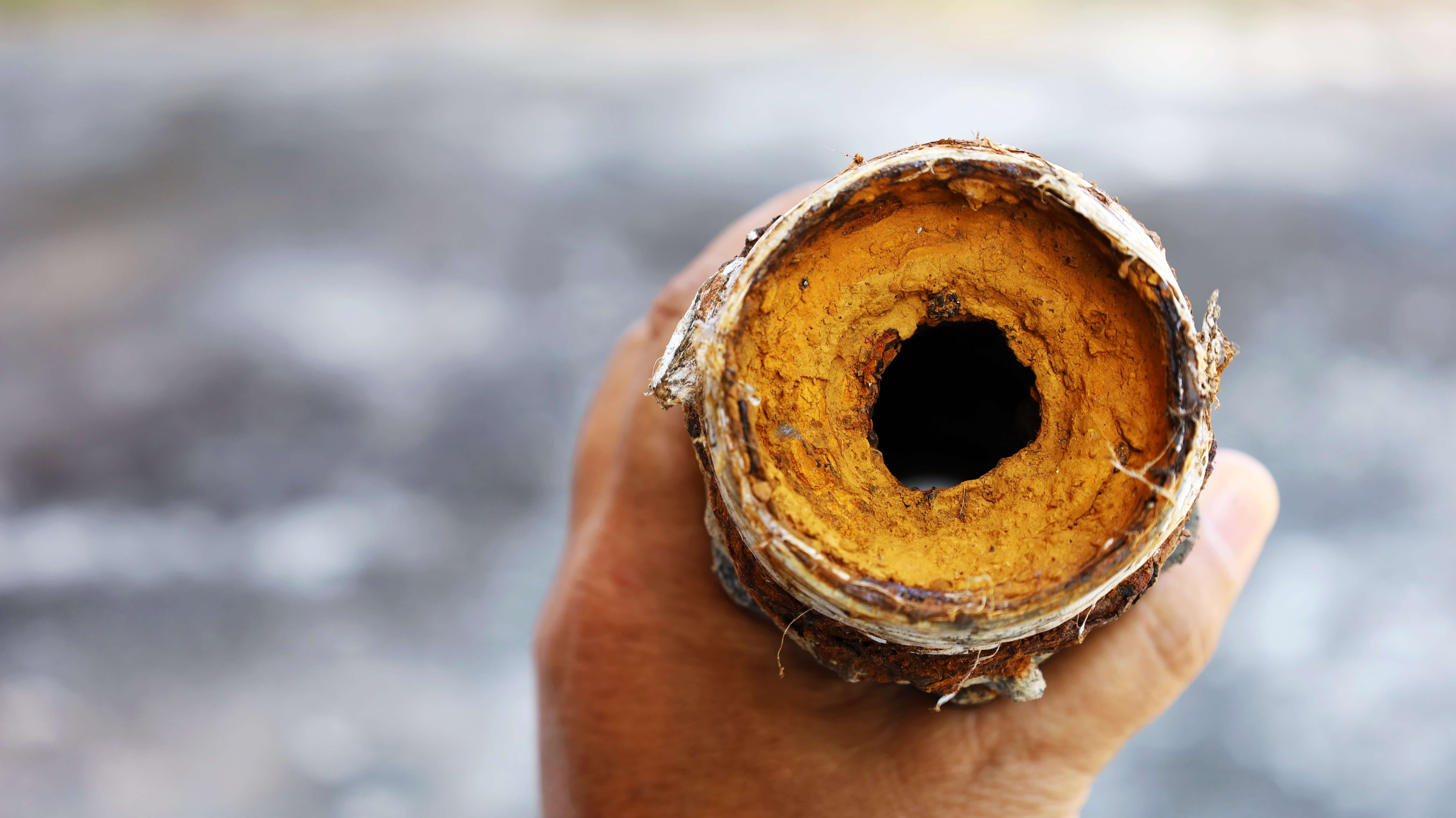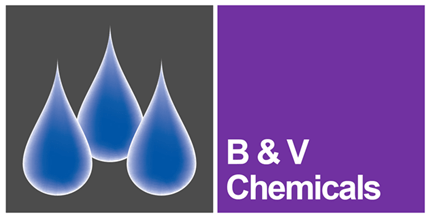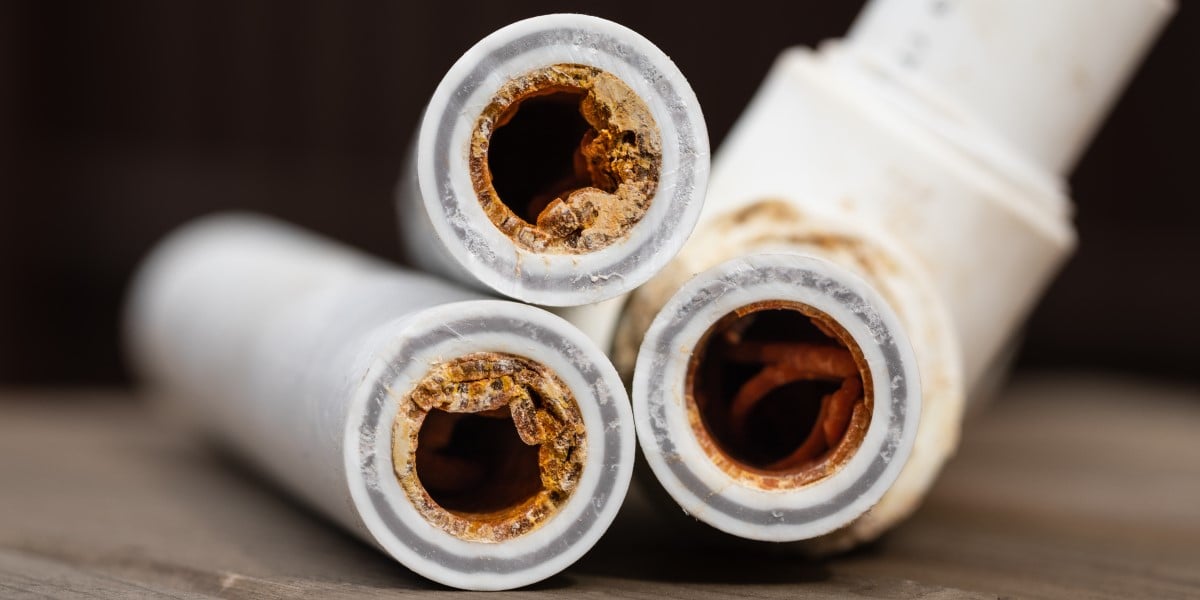Understanding the different types of corrosion and why they occur is vital when developing a water treatment programme to protect against corrosion in water systems.
In this blog post, we explore the problem with corrosion in water systems, what causes the different types of corrosion, and how to prevent it.
The problem with corrosion
Corrosion is the deterioration of a metal as a result of a chemical reaction between it and the environment around it. Almost completely unavoidable in everyday life, the process is perhaps most commonly seen as rust on iron, on cars, boats and steel structures such as bridges.
This a process where there is a reaction between the metal and oxygen to form iron oxide compounds; the brown layer seen in the picture below:

But if corrosion develops in water systems, it can quickly become a serious and costly problem, leading to increased maintenance expenses and equipment failure.
Corrosion impacts the reliability, lifespan and efficiency of distribution pipework, plant machinery and other components by causing metal loss due to build-ups of deposits or more serious deterioration - all which could disturb everything from heat transfer operations to simply stopping it working altogether.
Globally, the costs related to corrosion in water systems run into billions of pounds every year.
Preventing corrosion ultimately comes down to knowing what causes different types of corrosion – so recognising this issue before it gets out of hand is essential for protecting your system's performance.
What metals will corrode?
Corrosion is so common because most metals are more stable as compounds than as pure metal. This is because they have a desire to move from a high energy ‘unstable’ state to a lower energy ‘stable’ state.
All metals can corrode but the rate at which they corrode differs. For example, pure iron will corrode quickly while stainless steel, which does contain iron, is much slower to corrode.
A group of metals called the noble metals, which include silver, platinum and gold, will rarely corrode. But they also happen to be expensive so are used very sparingly in the types of water systems we would expect to come across. I have yet to see a gold cooling tower but I’m sure it would be quite a sight!
What types of corrosion are there?
There are many different reasons for metal corrosion. Some can be avoided by adding alloys to a pure metal. Others can be prevented by a careful combination of metals or management of the metal's environment, for example through the use of a corrosion inhibitor.
These are the most common types of corrosion:
General Attack Corrosion
This common form of corrosion attacks the entire surface of a metal structure. It is caused by chemical or electrochemical reactions. While general attack corrosion can cause a metal to fail, it is also a known and predictable issue. As a result, it is possible to plan for and manage general attack corrosion.
Localised Corrosion
This corrosion attacks only portions of a metal structure. There are three types of localised corrosion:
- Pitting - the creation of small holes in the surface of a metal.
- Crevice corrosion - corrosion that occurs in stagnant locations such as those found under gaskets.
- Filiform corrosion - corrosion that occurs when water gets under a coating such as paint.
Galvanic Corrosion
This is probably the most common type of corrosion and it occurs when two different metals are located together in a liquid electrolyte such as salt water. In essence, one metal's molecules are drawn toward the other metal, leading to corrosion in one of the two metals.
When two dissimilar metals are directly coupled together in a water environment, the less-noble metal electrochemically corrodes in preference to the more-noble metal. Steel fittings that are directly coupled to copper pipe, for example, will corrode since steel is less-noble than copper.
The speed of the chemical reaction will depend on the types of metals involved. A galvanic potential chart can help predict whether corrosion is likely to be an issue and how quickly it is likely to happen.
Environmental Cracking
When environmental conditions are stressful enough, some metal can begin to crack, fatigue, or become brittle and weakened. This is known as environmental cracking. Stressors can include high temperatures and low pH.
Factors that affect corrosion
Several factors affect corrosion in water systems, including the water chemistry and physical properties of the water:
Water quality - Soft and demineralised water are often viewed as corrosive, and therefore require pipe materials that are more resistant to corrosion, such as stainless steel and plastic.
Concentration of dissolved gases - Dissolved oxygen plays a key role in the corrosion of most metals. Iron and steel corrosion rates for example, increase with an increase with a higher concentration of dissolved oxygen.
Water temperature - Hot water tends to be more corrosive than cold water.
Water velocity - Excess flow can promote erosion of soft metals like copper. Meanwhile stagnant water conditions promote the growth of bacteria, creating an environment for microbiologically influenced corrosion (MIC).
Microbiology - The growth of microorganisms within water systems has the potential to cause extensive corrosion. MIC is the term used to label any type of corrosion which is primarily caused by bacteria, such as Pseudomonas. The bacteria doesn’t directly attack the metal, rather the corrosion is caused by the by-products of the process which result from bacterial growth reacting with the metal.
pH - While not a sole determinant of corrosion, the rates of corrosion for different types of metals can be influenced by the pH of the water. Iron and steel corrosion rates are stable within the pH range of 4.5 to 8.5 while protective zinc coating in galvanized pipe corrodes rapidly when the pH is less than 6.5.
Preventing corrosion in water systems
In terms of managing water systems, the main focus is the prevention of internal corrosion.
Cooling tower pipework and internals, closed system pipework and heat exchangers and steam boilers are all susceptible to corrosion. And if the corrosion process is not controlled, the results can be devastating to the system.
How to prevent corrosion will depend on the type of water system in question, whether it is a cooling tower, steam boiler or closed system.
However, often the most effective method is the use of chemical controls such as corrosion inhibitors and biocides. Corrosion inhibitors are added in small amounts to the water system to reduce, slow down or present corrosion of the metal. Biocides, on the other hand, work to reduce corrosion by controlling microbial growth. They can be used on a continuous basis or via a programme of shock dosing.
B&V Chemicals' range of corrosion inhibitors and biocides have been especially formulated to help business owners optimise their water systems. Our chemicals are made in the UK and used worldwide. If you want to find out more, please contact our technical team who will be happy to assist.
Want to learn more about corrosion prevention methods?
Read our blog post ‘Corrosion prevention: keeping your water systems safe’





